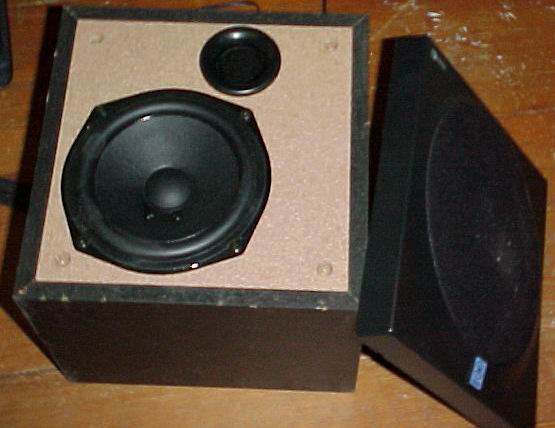Yamaha TSS-1 Dolby Digital / DTS 5.1 Surround Speakers
by Jim Warren on May 7, 2001 1:44 AM EST- Posted in
- Smartphones
- Mobile
Yamaha's approach to conquering the challenge of size, efficiency, and tonal quality comes from their Active Servo Technology. Based on the description in their technology brief, it seems like they have basically assigned a product name to a ported enclosure. They also address the resistance inherent in the cone of the speaker, though it sounds like the system is just trying to overcompensate for the bass in a smaller driver. The system is described as turning the water up in a restricted water hose - basically, if it's not loud enough, turn it up.

Unfortunately, applying the technology to the subwoofer seems counterproductive and actually overemphasizes the separation between subs and satellites. Though there is strong volume from the cabinet, the base is extremely washed out, with little to no accuracy or punch. Combine this with the lack of lower mids, and the bottom end of the system is disappointing.
The surround sound performance of the systems is on par with what the certifications indicate. It accurately decoded both DTS and Dolby Digital info, automatically selecting the format based on the digital stream provided.
The inputs on the system are worth playing around a little with. The digital input has three different types of decoding - DTS, Dolby Digital, and normal stereo decoding. Each selection has its own sonic characteristic, as there is either different circuitry or a different algorithm implemented in each case. The final comparison for the inputs is also provided by the front and rear analog inputs.

In ranking the digital inputs, the comparison is based on listening to demo CDs designed to bring out the accuracy of the respective technologies, but the final analysis is based on the sonic quality of the program as processed by the input. What that means is that although different program material was played for the tests, it was program material designed to make each input sound its respective best. Then, a judgment of how the acoustics of the TSS-1 system affected the program was made.
The results of the comparison were that on this system, the DTS digital input and processing sounded the best, followed by Dolby Digital. In the grand scheme of things, both of these exceeded the analog sound quality (not judging based on surround sound, just program quality). The stereo digital input trailed well behind the analog input— it sounds hollow and concentrated on the highs of the program.
For normal music operation and gaming, the analog input provided a warm input with low noise levels. The system seems to have a low noise floor, as there is little to no hiss in the system, even at high volumes.
The system is definitely designed for smaller format environments as it lacks the power to get very loud. As the volume control goes up, the highs distort first as they were overemphasized in the first place. The bass response also gets left behind as the volume goes up and the highs take over. Don't try to knock plaster down with the system, because it won't even come close.
With the system thoroughly tested, it was time to step back from the system and examine the whole package. See how it shakes out in the conclusion.










2 Comments
View All Comments
snowmyr - Friday, September 13, 2019 - link
Great review!fluidaudio23 - Friday, January 31, 2020 - link
Get the highly effective <a herf="https://www.fluidaudio.com/products/desktop-stands...">Desktop stands</a> from Fluid Audio designed for use with all 7” and 8” 2-way studio monitors. It comes with rubber feet that convert it into an acoustic isolation system and offers you the facility to elevate your monitors to two heights: 2.5” and 5”.